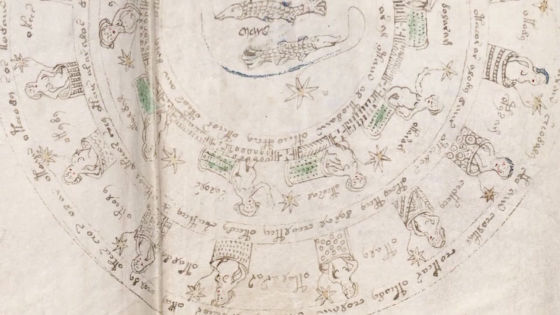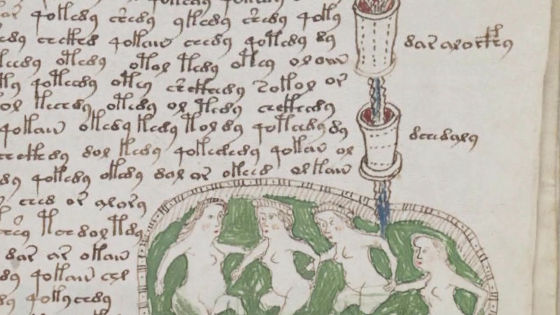A theory that Voynich manuscript which was not decoded for over 100 years is written "in old Turkish" appeared

An ancient document that is thought to have been created in the 15th century "Voynic manuscript"Has been deciphering work by researchers all over the world for more than 100 years, but the exact content has not been elucidated yet. A Canadian electrician insists that the Voynich manuscript which introduces AI using machine learning and decipherment is advanced was stated in the old Turkish language.
Voynich Manuscript Revealed (2018) - YouTube
Voynich manuscript is an old document written in uncritical letters discovered in Italy, reading comprehension has been tried all over the world but it is still not understood. In hand-painted books, it is characterized by the fact that illustrations of plants and the like can be seen everywhere, it is said that it is certain to have certain meaning.

The content is "herbal"

"astronomy"

"biology"

"Space science"

"Pharmacology"

It is divided into six sections of "cooking".

Amet Ardick says that researchers from around the world tried to decipher and succeeded in reading the failed Voynich manuscript. He said he was an electrician living in Canada. Mr. Ardic, who saw the Voynic manuscript for the first time four years ago, finds shapes meaning prefixes and suffixes in distinctive letters, and if the pattern resembles Turkish used in his home country It seems he felt it.

Common suffixes are used among different letters.

Mr. Ardic, who felt affinity with the Turkish character "Turqu", began to decipher the Voynich manuscript.

Mr. Ardick who enlarges the illustration in the Voynich manuscript and puts a note on the sticky note. Firstly I found the letters equivalent to seven old Turku characters in the Voynich manuscript.

Mr. Ardick rolled over his son, Osan and Alp, and got into the deciphering work. It was said that two sons were also interested and deciphering Voynic manuscripts became a major project of the Ardic family.

Ozan says that he was not earnest at first.

While proceeding with the deciphering work, it seems that the Voignite manuscript seems to have used a poetic writing method called "Phonemic Orthography" which describes speech.

For example, in "FOLIO 33-V" (33V page) ...

The description rhythmically matches.

Mr. Ardick investigated what kind of role these letters play next when it sees that 7 characters match the old Turkic character.

"FOLIO 67-R" in the astronomy section

Mr. Ardic predicted that the circle was divided into 12 pieces, from the illustration, it was a calendar.

It seems that each section seems to mean "the moon" of the year.

It is said that the task of replacing the characters representing each month with the alphabet has been completed after the task of rewriting the character representing each month to the modern Turku character.

For example, the meaning of "7 (seven)" is replaced with the pronunciation "yedi (Yedi)".

Pronunciation can also be combined. The combination of 7 and 4 can be converted to pronunciation "4yedi".

In addition, the meaning depends on the position where the letters are placed in the words.

The letter which the two letters combined on the left and right shows that the right side shows "P" of the alphabet.


And on the left side is "I". "IP (Ipe)" is an old Turkish word meaning "rope".

The lower letter is a letter indicating "measurement", after all, it seems that the combined character means the length of the rope.

With the above-mentioned reading comprehension work, letters can be classified into basic 24 kinds, and it turned out that they are described by combining them.

I will return to the calendar of "FOLIO 67-R" again.

It is said that January to December are described in order.

For example, the following letters represent "October". In the pronunciation "Ogzaf", in the old Turkish dictionary it is "Yuzai".

"Yuzai" of "Yuzai" means "fall", "Ai" means two "moon" of time and celestial bodies. From these, the letters of October will be the "autumn moon"

In November, the notation "Sepel" "Sepeli".

They can be converted to modern Turkish "Seper Ayi" and "Sefer Ayi" ...

I can translate it as "the moon of rain".

In July I translated it as "the month of harvest."

Challenge again to decipher FOLIO 33-V.

It seems that it could be translated into sentences that describe everyday life, such as being able to examine the timing of harvesting from the shape and feel of plant species.

Mr. Ardick has already succeeded in finding more than 300 words.

Mr. Ardick has posted his research results as a paper at the John's Hopkins University digital journal and is being peer reviewed. Now it seems that other scholars who are interested in thesis are also participating in the research.

According to Ardick, it is expected that it will take several more years to translate the full text of the Voynich manuscript that spans over 200 pages. From now on, experts from Turkish ancient languages will be joined, and it will be verified that the accuracy of the decoding of Mr. Ardick will be done.
Related Posts:







